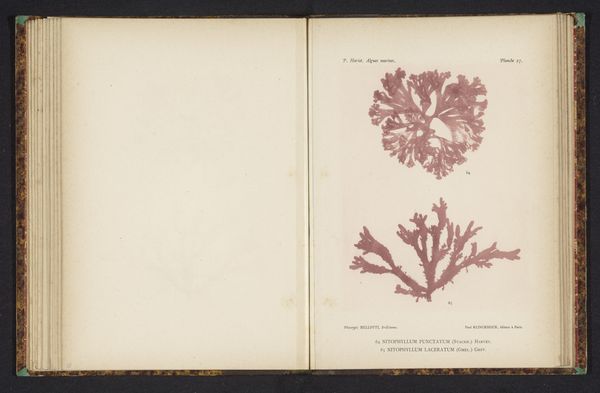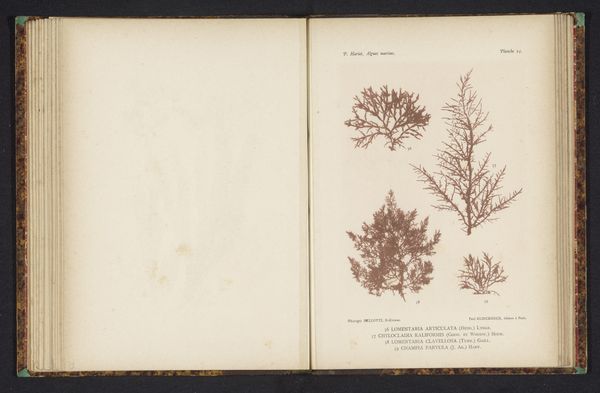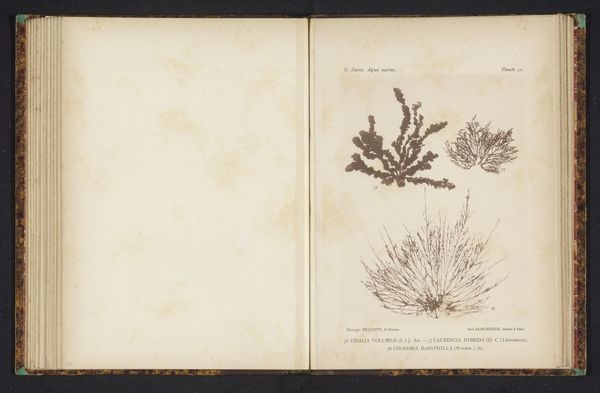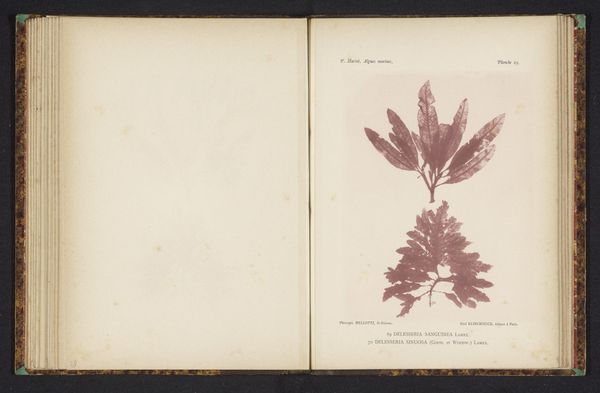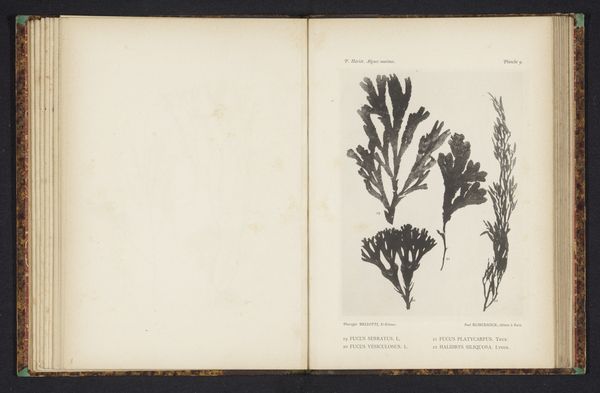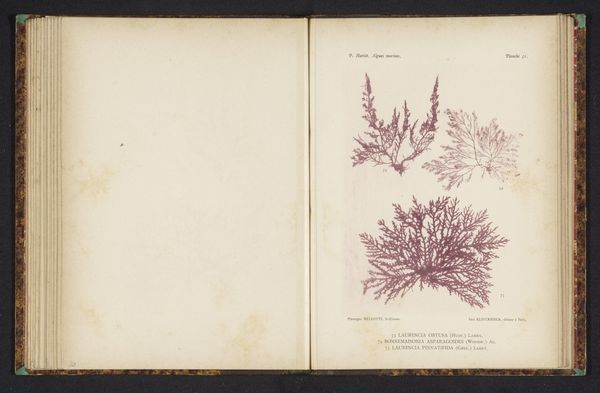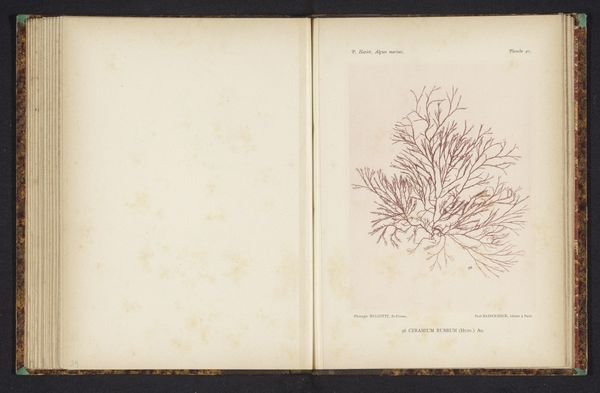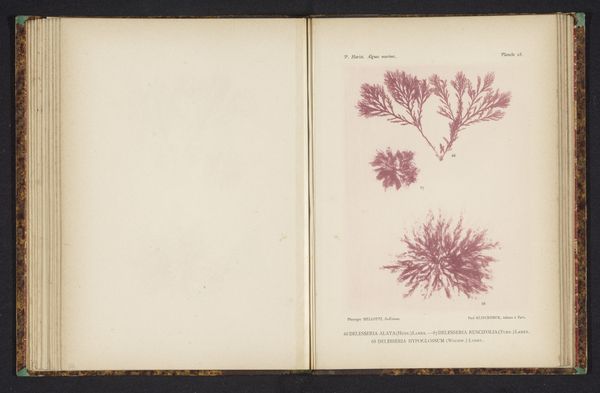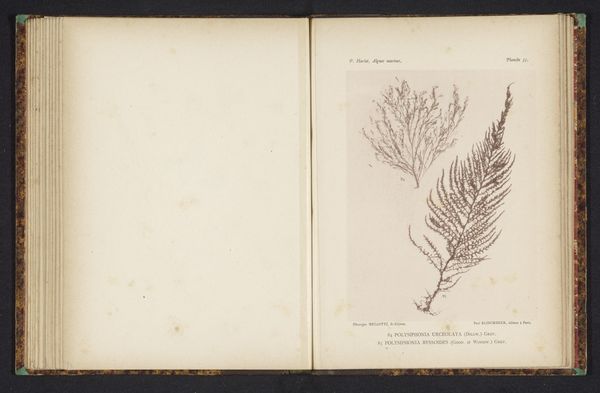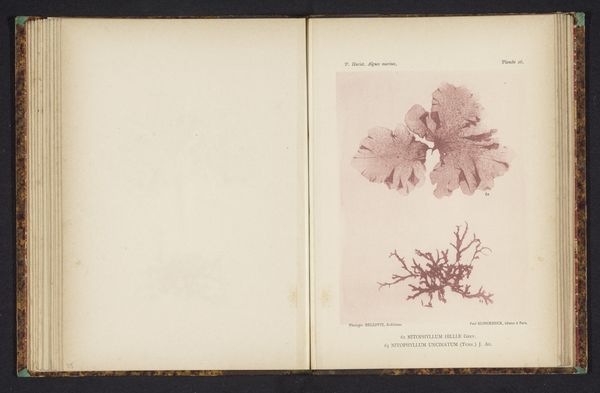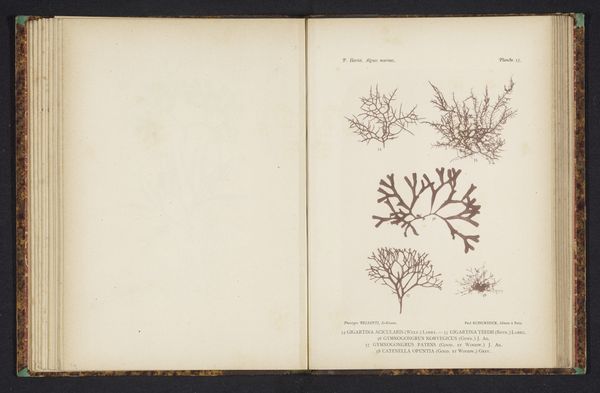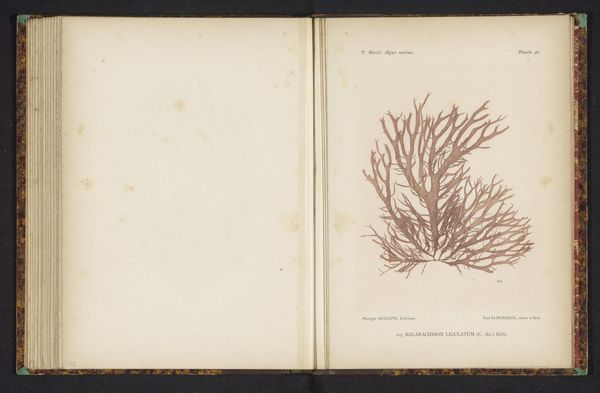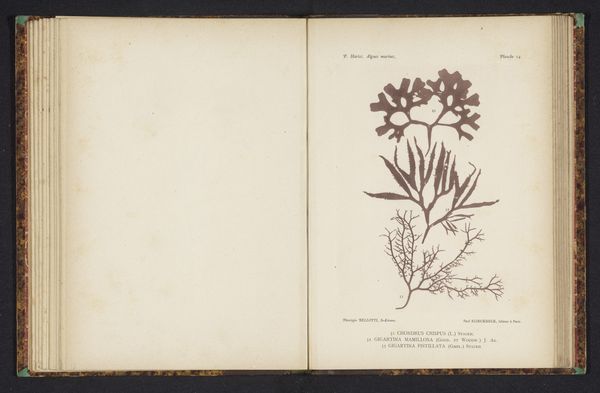
drawing, print, paper, ink
#
drawing
# print
#
figuration
#
paper
#
ink
#
naturalism
#
botanical art
Dimensions: height 161 mm, width 119 mm
Copyright: Rijks Museum: Open Domain
Curator: Here we have a botanical illustration from before 1892 entitled "Drie soorten zeewier," or "Three kinds of seaweed." It is a print made with ink on paper by an anonymous artist. Editor: My immediate impression is how delicate the images are. Each form is like an elaborate dance, frozen in time with its incredible texture highlighted by what must have been an intentional graphic layout. Curator: Absolutely. Let’s consider this drawing's likely place in a broader network of scientific observation. Before photography, meticulous drawings such as this one played a pivotal role in botanical studies, contributing to both scientific classification and a wider societal understanding—and sometimes even exploitation—of natural resources. The print medium democratized these images, allowing wider access. Editor: I see what you're suggesting. Thinking about the artist’s process is crucial: where were they positioned socially and physically to even engage with this seaweed? Someone had to harvest it, deliver it... then think about the skill involved in creating the matrix to achieve these forms. It is worth reflecting upon the social relations underpinning production and dissemination. This print required resources like paper, ink, and machinery as well. Curator: Yes, and look at the detail conveyed with just ink on paper. The different textures and branching patterns of each seaweed type, almost a map. How does our understanding of naturalism as a style then get impacted when thinking about this imagery existing pre-mass environmental awareness? It becomes complicated as botanical prints might fuel interest in plants but also colonial plundering of global resources. Editor: A poignant tension indeed. The history and potential use of this image brings up conversations about climate justice, historical scientific inequity, and what responsibility artists—or, in this case, illustrators—have towards how their work might be received in relation to its sociopolitical contexts. It becomes about far more than the algae depicted. Curator: Exactly! It's so much more layered than just seaweed on a page! Editor: It’s a good reminder to be aware about the stories our natural archives can tell us.
Comments
No comments
Be the first to comment and join the conversation on the ultimate creative platform.
